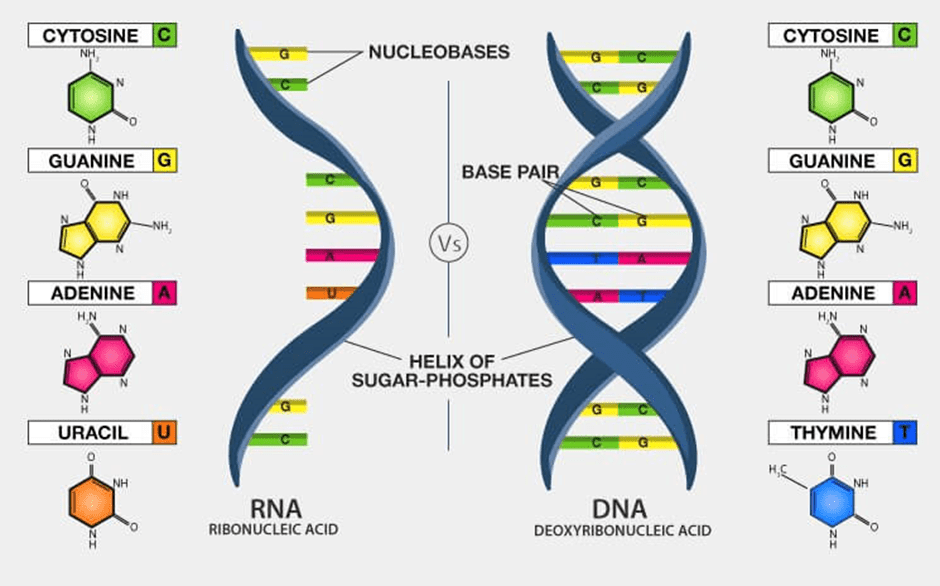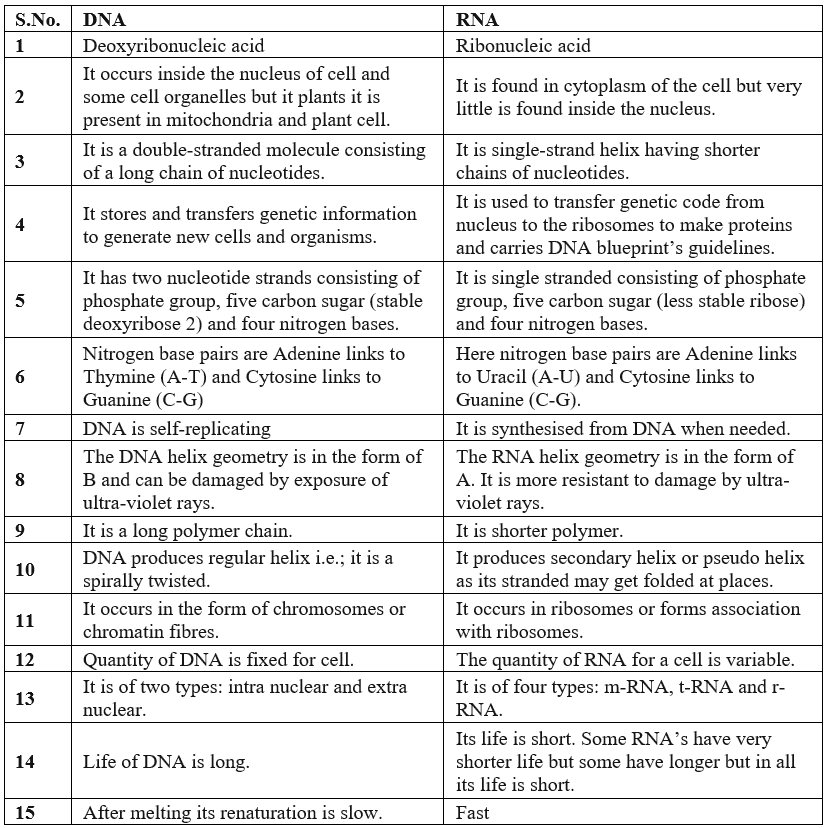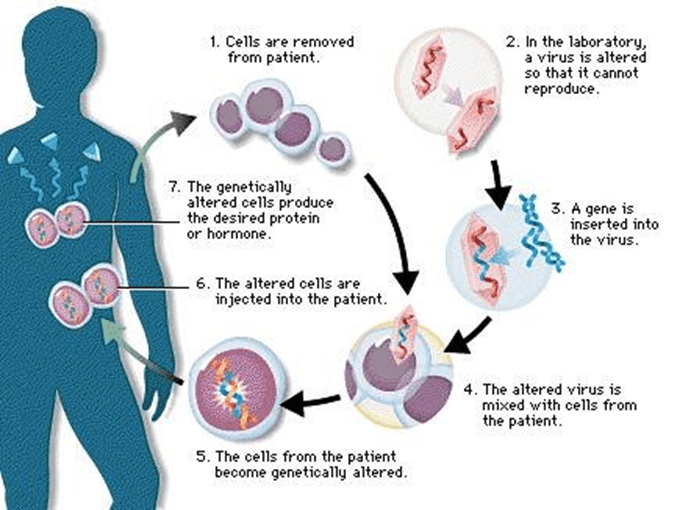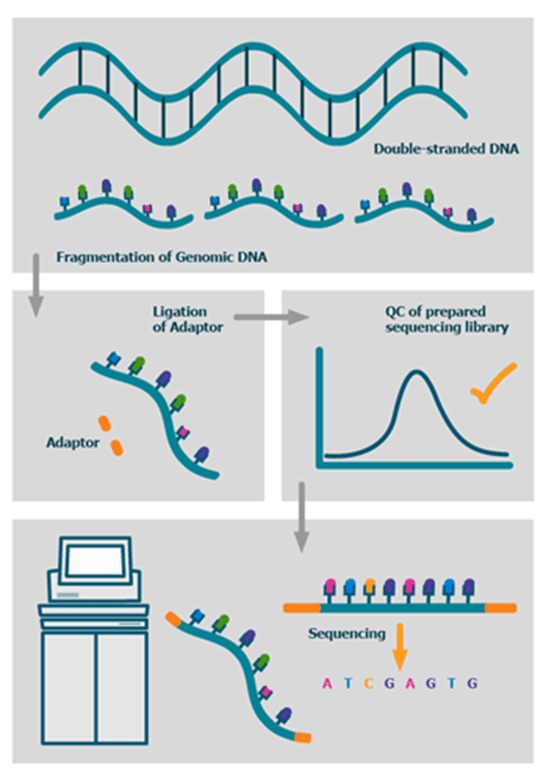Introduction to Biotechnology | Science & Technology for UPSC CSE PDF Download
| Table of contents |

|
| Biotechnology |

|
| Principles of Biotechnology |

|
| Differences between DNA and RNA |

|
| Commonly Used Procedures in Recombinant DNA Technology |

|
| Genome Sequencing |

|
Biotechnology
Biotechnology harnesses living organisms or their components to innovate technologies across various fields for sustainable human development. The European Federation of Biotechnology defines it as the integration of natural sciences with organisms, cells, and molecular analogues to create products and services. By 2025, biotechnology encompasses synthetic biology, AI-driven drug discovery, and climate-focused applications like carbon sequestration, reflecting its expanded role in addressing global challenges such as health, food security, and environmental sustainability.
At its core, biotechnology involves manipulating organisms, their parts, or biological systems to achieve specific outcomes. This includes advanced techniques like CRISPR gene editing and traditional practices like fermentation in brewing and baking, where yeast transforms substrates into desired products. Emerging fields like bioinformatics and microbiome engineering further broaden its scope, enabling precision medicine and sustainable agriculture.
Applications of Biotechnology
- Biopharmaceuticals and Biologics: Large-scale production of medicines like mRNA vaccines and biologics using genetically modified microbes, fungi, plants, and animals.
- Therapeutics: Development of advanced treatments, including CAR-T cell therapies and gene therapies for rare diseases.
- Diagnostics: Creation of precision diagnostic tools, such as CRISPR-based tests for infectious diseases.
- Genetically Modified and Gene-Edited Crops: Engineering crops for enhanced yield, pest resistance, and climate resilience, including gene-edited varieties like non-browning bananas.
- Processed Food: Enhancing food quality and safety through biotechnological processes, such as probiotic-enriched products.
- Bioremediation: Using microbes to degrade environmental pollutants, including plastic-degrading enzymes like PETase.
- Waste Treatment: Managing waste through biotechnological methods to reduce harmful substances and promote recycling.
- Energy Production: Generating sustainable biofuels and bioenergy from algal and microbial sources.
Examples of Biotechnology in Action
a. mRNA Vaccines: mRNA vaccines, like India’s Gemcovac, use synthetic mRNA to instruct cells to produce viral proteins, triggering immunity. This technology, pivotal in COVID-19 response, showcases biotech’s role in rapid vaccine development.
b. CAR-T Cell Therapy: Genetically modified T-cells are used to target cancer cells, as seen in India’s NexCAR19 therapy for leukemia, demonstrating biotech’s precision in personalized medicine.
c. In Vitro Fertilization (IVF): IVF assists fertility by fertilizing eggs in a lab, now enhanced with preimplantation genetic diagnosis (PGD) to screen for genetic disorders, reflecting advancements in reproductive biotech.
d. Gene Therapy: Therapies like Zolgensma deliver functional genes to treat disorders like spinal muscular atrophy, combining CRISPR and viral vectors for targeted DNA repair.
e. Tissue Engineering: Lab-grown tissues, such as organ-on-chip systems, mimic human organs for drug testing, advancing applications in medicine and environmental research.
Biotechnology’s diverse applications span healthcare, agriculture, environmental management, and food production. By leveraging organisms for specific purposes, it addresses global challenges, aligning with India’s sustainable development goals and UPSC-relevant topics like science and technology.
Principles of Biotechnology
Genetic Engineering
Genetic Engineering involves techniques to modify an organism’s DNA or RNA to alter its traits. This includes editing the genome’s chemical structure and introducing it into other organisms to achieve desired characteristics, such as disease resistance or enhanced productivity.
A sterile environment is critical to prevent contamination and ensure the growth of desired microbes or eukaryotic cells for producing biotech products like vaccines, enzymes, and gene therapies. By 2025, tools like CRISPR-Cas9 and prime editing have revolutionized genetic engineering, offering precision and scalability.
Genetic Engineering, also known as gene manipulation or genetic modification, alters an organism’s genome to introduce novel traits. It underpins applications like gene-edited crops and personalized medicine, critical for UPSC’s science and ethics papers.
Techniques in Genetic Engineering
- Gene Isolation: Extracting desired gene sequences from cells via cleavage and denaturation, now aided by next-generation sequencing (NGS).
- Gene Synthesis: Synthesizing genes using automated platforms, enhanced by AI-driven design for precision.
- Recombinant DNA Technology: Creating recombinant DNA (r-DNA) by inserting genes into vectors, with transgenic organisms expressing new traits.
- Gene Editing: Using CRISPR-Cas9, Cas12, or prime editing to precisely modify genes, enabling applications like gene drives for pest control.
Hazards of Genetic Engineering
- Incorrect DNA Insertion: Misplaced DNA can cause unintended health issues, requiring rigorous safety protocols.
- Biosecurity Risks: Techniques may be misused for biological warfare or gain-of-function research, raising global concerns.
- Ecological Imbalance: Modifying or reintroducing species (e.g., via gene drives) may disrupt ecosystems.
- Pathogen Emergence: New bacterial or faunal strains may pose health risks if not properly contained.
- Loss of Genetic Diversity: Uniform genetic modifications can reduce species resilience, increasing extinction risks.
National Genomic Grid
- The National Genomic Grid (NGG) advances cancer research tailored to India’s population.
- By 2025, NGG has expanded to enhance accessible cancer treatments across economic strata, leveraging genomic data analysis.
- It collaborates with the National Cancer Tissue Biobank (NCTB) at IIT Madras, analyzing genomic factors to tailor treatments for Indian patients.
- NGG operates with nationwide collection centers, integrating all major cancer treatment institutions.
- The grid is structured into four regions: east, west, north, and south, ensuring comprehensive coverage.
National Cancer Tissue Biobank (NCTB)
- NCTB, a joint initiative of the Department of Science and Technology (DST) and IIT Madras, supports India-specific cancer research.
- It collaborates with the Indian Council for Medical Research (ICMR) to advance genomic studies.
- With a capacity for 50,000 genomic samples, NCTB now holds over 10,000 samples by 2025, aiding precision oncology.
Differences between DNA and RNA
- Sugar: DNA contains deoxyribose sugar, while RNA contains ribose sugar, distinguished by an additional -OH group in ribose.
- Strands: DNA is double-stranded, whereas RNA is single-stranded, affecting their roles in genetic processes.
- Stability: DNA is stable under alkaline conditions, while RNA is less stable, impacting their applications in biotech.
- Functions: DNA stores genetic information, while RNA facilitates protein synthesis as a messenger between DNA and ribosomes.
- Base Pairing: DNA uses adenine, thymine, cytosine, and guanine, while RNA replaces thymine with uracil, lacking a methyl group.
 DNA vs RNA
DNA vs RNA
Comparison of DNA and RNA

Biological Functions of Nucleic Acids – DNA
- DNA serves as the foundation of heredity, acting as the repository for genetic information.
- DNA maintains species identity over evolutionary timescales.
- DNA replication during cell division ensures identical DNA is passed to daughter cells.
- Protein synthesis involves RNA molecules translating DNA-encoded instructions, now studied via single-cell sequencing.
DNA Fingerprinting
- DNA fingerprinting identifies individuals via unique DNA sequences, analogous to traditional fingerprints.
- Applications include:
- Forensic Laboratories: Identifying criminals by matching crime scene DNA with suspects.
- Paternity Testing: Confirming biological parentage through DNA comparison.
- Identification of Deceased: Identifying victims in disasters using familial DNA matching.
- Genetic Relationships: Studying population genetics to trace human migration and evolution.
Recombinant DNA
- In 1953, DNA’s structure was elucidated, enabling recombinant DNA (rDNA) technology by 1972, which combines DNA from different sources.
- rDNA is created via molecular cloning, producing novel DNA sequences not found in nature.
- DNA’s universal chemical structure, varying only in nucleotide sequences, enables rDNA feasibility.
- Transgenic organisms with rDNA typically exhibit normal traits, with minimal changes in appearance or metabolism.
The Basic Steps Involved in Recombinant DNA Technology
- Isolating a DNA fragment containing the gene of interest (insert).
- Creating rDNA by inserting the fragment into a vector (e.g., plasmid) that replicates in a host cell.
- Transferring rDNA into an E. coli host via transformation.
- Selecting host cells with rDNA, allowing multiplication to amplify rDNA molecules.
- This process produces large rDNA quantities (gene cloning) or significant protein output.
- Pioneered by Paul Berg, Herbert Boyer, Annie Chang, and Stanley Cohen in 1973.
- rDNA is introduced into hosts using advanced methods tailored to vector and cell types.
 DNA Recombination
DNA Recombination
Commonly Used Procedures in Recombinant DNA Technology
- Transformation: Introducing rDNA into bacterial hosts like E. coli.
- Transfection: Delivering DNA into eukaryotic cells for gene expression studies.
- Electroporation: Using electric pulses to facilitate DNA uptake in cells.
- Microinjection: Precisely injecting DNA into cells using a microsyringe under microscopic guidance.
- Biolistics: Propelling DNA-coated gold or tungsten particles into plant cells using a gene gun.
Applications of Recombinant DNA Technology
- rDNA technology drives advancements in biotechnology, medicine, and research.
- It enables gene identification, mapping, and sequencing, elucidating gene functions.
Production of Recombinant DNA
- Human Insulin: rDNA produces cost-effective insulin, widely accessible for diabetes management.
- Human Growth Hormone: rDNA-derived growth hormone treats deficiency disorders.
- Blood Clotting Factor VIII: rDNA produces Factor VIII for hemophilia treatment.
- Climate-Resilient Crops: Gene-edited crops like drought-resistant rice enhance food security.
- Bacillus thuringiensis: Bt crops produce insecticidal proteins, reducing pesticide use.
DNA Profiling
- Modern DNA profiling uses STR (Short Tandem Repeat) analysis, leveraging microsatellites for higher precision.
- Microsatellites (STRs) are short, repetitive sequences (2–5 base pairs) like ‘TATATATATATA’, analyzed via automated sequencing platforms.
DNA Sequencing
- The genomic era, by 2025, relies on next-generation sequencing (NGS) for comparative genomic analysis.
- Pioneered by Fred Sanger, Walter Gilbert, and Allan Maxam, Sanger’s refined method underpins modern techniques.
- DNA sequencing determines the order of bases (A, T, C, G), revealing genetic information for applications like precision medicine.
Benefits of DNA Sequencing
- Forensics: Identifying individuals via unique DNA profiles.
- Paternity Testing: Confirming parentage through sequence comparison.
- Medicine: Detecting genes linked to hereditary or acquired diseases, aiding personalized treatments.
- Agriculture: Developing pest-resistant and climate-adaptive crops for enhanced yields.
DNA Barcoding
DNA barcoding identifies species by analyzing a standardized DNA segment, leveraging unique sequences to distinguish organisms, critical for biodiversity studies.
Application
- Identifying plant leaves without fruits, aiding conservation efforts.
- Distinguishing insect larvae for ecological and agricultural research.
- Verifying commercial products for accurate labeling and transparency.
Criticism
- Critics argue DNA barcoding oversimplifies taxonomy, potentially missing complex species relationships.
- Over-reliance may lead to incomplete biodiversity assessments, necessitating integrative approaches.
Genome Sequencing
Genome sequencing determines an organism’s entire DNA sequence, reading the A, T, G, and C bases. By 2025, single-cell and metagenomic sequencing enhance applications in medicine, agriculture, and environmental science, aligning with India’s biotech policies.
 Genome Sequencing
Genome Sequencing
|
90 videos|490 docs|209 tests
|
FAQs on Introduction to Biotechnology - Science & Technology for UPSC CSE
| 1. What is biotechnology? |  |
| 2. What are the applications of biotechnology? |  |
| 3. How is biotechnology used in medicine? |  |
| 4. What are the ethical concerns associated with biotechnology? |  |
| 5. What are the environmental applications of biotechnology? |  |
















